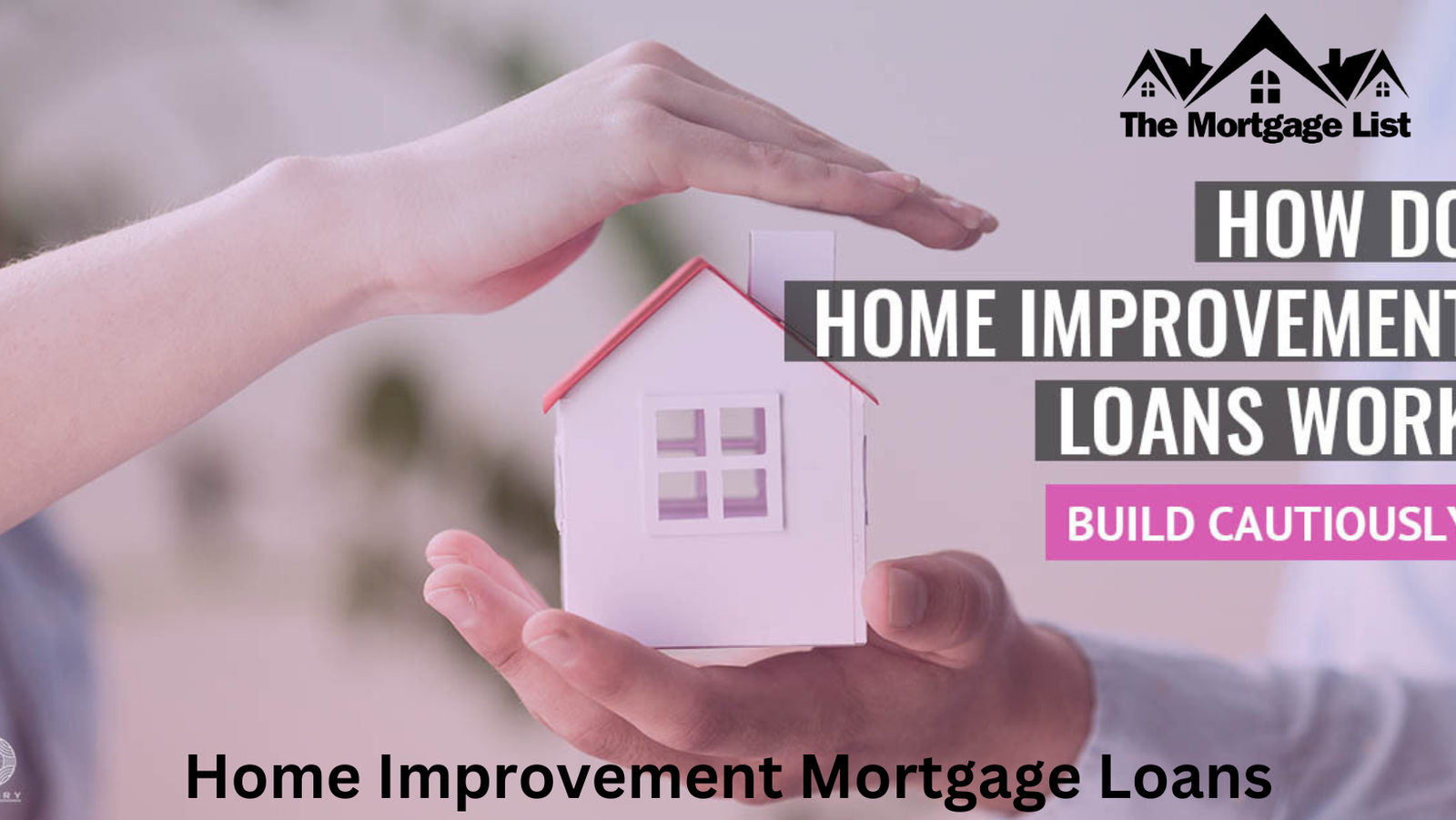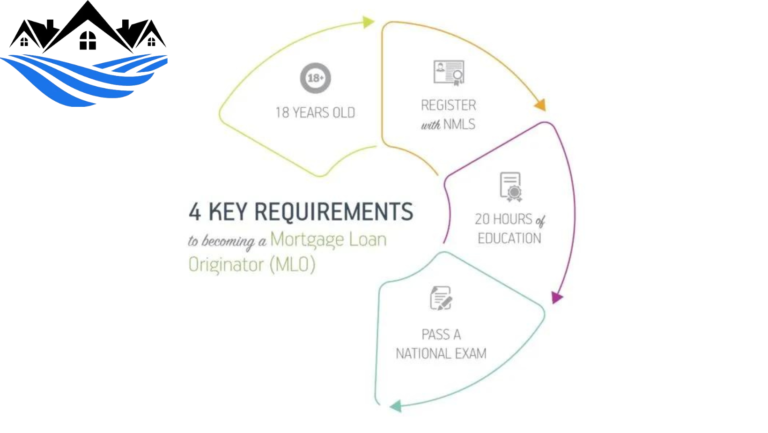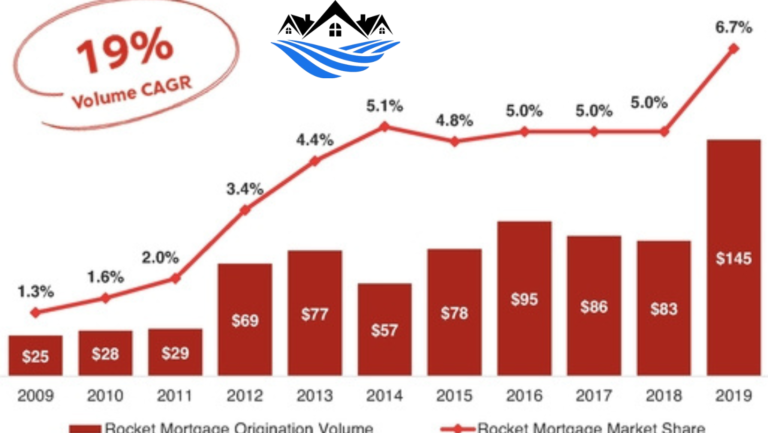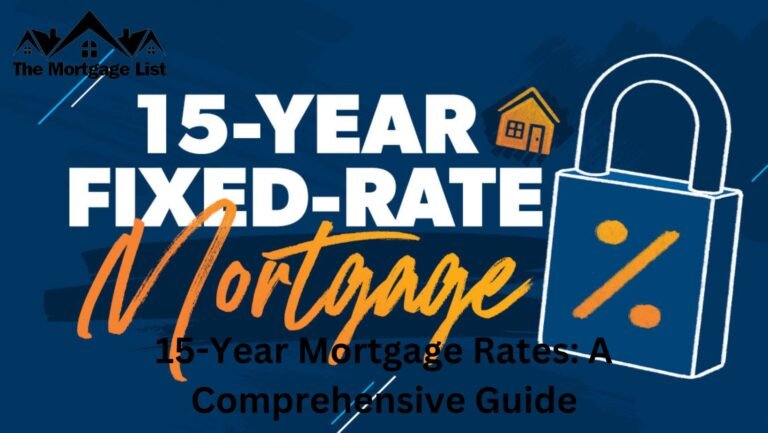Home Improvement Mortgage Loans
Home Improvement Mortgage Loans: Transforming Your House Into Your Dream Home
Home improvement projects are exciting opportunities to personalize and enhance your living space. However, the costs associated with renovations can often deter homeowners from pursuing their dreams. This is where home improvement mortgage loans come into play, offering a convenient solution to finance your remodeling endeavors while spreading payments over time.
Introduction to Home Improvement Mortgage Loans
Home improvement mortgage loans are financial products designed to provide homeowners with the funds needed to renovate or upgrade their properties. Whether you’re looking to remodel your kitchen, add an extra bedroom, or install energy-efficient features, these loans offer a flexible way to turn your vision into reality.
Renovating your home not only improves its aesthetics and functionality but also increases its market value. By investing in upgrades, you can enjoy a more comfortable living space while potentially boosting your property’s resale value.
Benefits of Home Improvement Mortgage Loans
One of the primary benefits of home improvement mortgage loans is access to funds for renovations without depleting your savings. Instead of paying for improvements upfront, you can spread the costs over time through manageable monthly payments. This allows you to undertake larger projects that might otherwise be financially challenging.
Furthermore, home improvement projects can result in significant tax benefits for homeowners. In many cases, the interest paid on home improvement loans is tax-deductible, providing additional savings over the long term.

Types of Home Improvement Mortgage Loans
There are several types of home improvement loans available to homeowners, each with its own set of features and eligibility requirements. Some common options include:
- Home Equity Loans: These loans allow homeowners to borrow against the equity in their property, typically offering fixed interest rates and predictable monthly payments.
- Home Equity Lines of Credit (HELOC): A HELOC functions similarly to a credit card, allowing homeowners to borrow against their home equity as needed. Interest is charged only on the amount borrowed, providing flexibility for ongoing renovation projects.
- Cash-Out Refinance: With a cash-out refinance, homeowners can replace their existing mortgage with a new one, borrowing additional funds beyond what is owed on the original loan. This can be an attractive option for homeowners with substantial equity in their properties.
- FHA 203(k) Loan: Insured by the Federal Housing Administration (FHA), these loans are specifically designed for homebuyers and homeowners looking to finance both the purchase and renovation of a property.
- Personal Loans: While not specifically tailored for home improvements, personal loans can be used to fund renovation projects, offering flexibility and quick access to funds.
How to Qualify for a Home Improvement Mortgage Loan
Qualifying for a home improvement mortgage loan typically requires meeting certain criteria, including a minimum credit score, a stable income, and sufficient home equity. Lenders will also evaluate your debt-to-income ratio to ensure you can afford the monthly payments.
Before applying for a loan, it’s essential to review your credit report and address any issues that could negatively impact your eligibility. Additionally, having a clear understanding of your renovation plans and estimated costs will help lenders assess the feasibility of your project.
Choosing the Right Lender
When it comes to selecting a lender for your home improvement mortgage loan, it’s crucial to shop around and compare options. Consider factors such as interest rates, loan terms, and closing costs, as well as the lender’s reputation and customer service.
Online resources and customer reviews can provide valuable insights into the experiences of other borrowers. Additionally, don’t hesitate to ask lenders questions about their products and services to ensure they meet your needs.
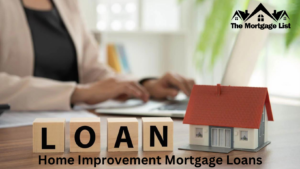
Steps to Apply for a Home Improvement Mortgage Loan
The application process for a home improvement mortgage loan typically involves several steps, starting with gathering the necessary documentation. This may include proof of income, tax returns, and property information.
Once you’ve assembled your documents, you can submit your application to the lender of your choice. Be prepared to provide detailed information about your renovation plans, including cost estimates and timelines.
After reviewing your application, the lender will determine whether you qualify for the loan and, if approved, provide you with a loan offer detailing the terms and conditions. Upon acceptance, the funds will be disbursed according to the agreed-upon schedule.
Using Home Improvement Mortgage Loans Wisely
While home improvement mortgage loans offer valuable financing options, it’s essential to use them wisely to avoid financial strain in the future. Start by carefully planning your renovation project and creating a realistic budget that accounts for all expenses.
When hiring contractors and purchasing materials, be sure to obtain multiple quotes and thoroughly vet the professionals involved. Additionally, consider prioritizing renovations that offer the highest return on investment (ROI) and incorporating energy-efficient features to reduce long-term utility costs.
Risks Associated with Home Improvement Mortgage Loans
While home improvement mortgage loans can be beneficial, they also come with certain risks that borrowers should be aware of. One of the primary risks is the potential for defaulting on payments if unforeseen financial challenges arise. Defaulting on a loan can lead to late fees, damage to credit scores, and even foreclosure in severe cases.
Additionally, taking on additional debt through a home improvement loan increases your financial obligations, which could strain your budget if not managed carefully. It’s essential to evaluate your ability to make consistent payments before committing to a loan and to have a contingency plan in place for unexpected expenses.
Tips for Maximizing the Value of Your Home Improvement Project
To ensure you get the most out of your home improvement project, consider the following tips:
- Focus on Renovations with High ROI: Prioritize upgrades that offer the best return on investment, such as kitchen and bathroom remodels or adding a deck or patio.
- Add Energy-Efficient Features: Incorporating energy-saving appliances, windows, and insulation not only reduces your carbon footprint but also lowers utility bills, increasing the appeal of your home to potential buyers.
- Maintain the Property: Regular maintenance and upkeep are essential for preserving the value of your home. Addressing minor repairs promptly can prevent more significant issues from arising down the line.
Common Mistakes to Avoid
Avoid these common pitfalls when planning your home improvement project:
- Underestimating Renovation Costs: Regarding the costs associated with your project, be realistic and adjust your budget accordingly. It is preferable to overestimate than to be unprepared for unforeseen expenses.
- Not Researching Loan Options Thoroughly: Take the time to explore all available loan options and compare interest rates, terms, and fees before committing to a lender.
- Skipping Inspections: Prioritize home inspections before beginning any renovations to identify potential issues that could impact the scope or cost of your project.
Case Studies: Successful Home Improvement Projects
To illustrate the impact of home improvement mortgage loans, consider the following examples:
- Kitchen Renovation: A homeowner utilizes a home equity loan to finance a kitchen renovation, including new cabinets, countertops, and appliances. The updated kitchen not only enhances the home’s aesthetic appeal but also increases its resale value.
- Bathroom Remodel: Another homeowner chooses a cash-out refinance to fund a bathroom remodel, installing a luxurious soaking tub, walk-in shower, and modern fixtures. The renovated bathroom becomes a selling point for potential buyers, resulting in a higher sale price for the property.
The Future of Home Improvement Mortgage Loans
As technology continues to advance, the landscape of home improvement mortgage loans is evolving. Innovations such as online application processes, digital document submission, and instant approval decisions are streamlining the borrowing experience for homeowners.
Additionally, there is a growing emphasis on sustainable and eco-friendly renovations, driven by consumer demand for energy-efficient homes. Lenders are increasingly offering incentives for green upgrades, such as lower interest rates or rebates on eligible projects.
Conclusion
Home improvement mortgage loans offer homeowners a practical and accessible means of financing their renovation projects. By carefully considering loan options, planning renovations thoughtfully, and prioritizing investments with high ROI, homeowners can transform their properties into their dream homes while increasing their value in the process.
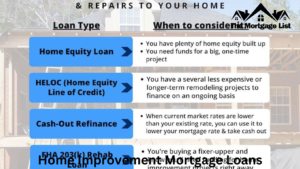
FAQs
- What credit score do I need to qualify for a home improvement mortgage loan?
- Most lenders prefer a credit score of 620 or higher, but requirements may vary depending on the type of loan and lender.
- Can I use a home improvement loan for landscaping projects?
- Yes, many home improvement loans can be used for landscaping projects, as long as the renovations add value to the property.
- How much time does it take to have a loan for home improvement approved?
- Approval times can vary depending on the lender and the complexity of the application, but it typically takes a few days to a few weeks to receive a decision.
- What happens if I can’t repay my home improvement loan?
- If you default on your loan, you may face penalties, damage to your credit score, and potentially foreclosure on your property.
- Can I get a home improvement loan if I’m still paying off my mortgage?
- Yes, many homeowners choose to use home improvement loans in addition to their existing mortgage, either through a second mortgage or by refinancing their current loan.

